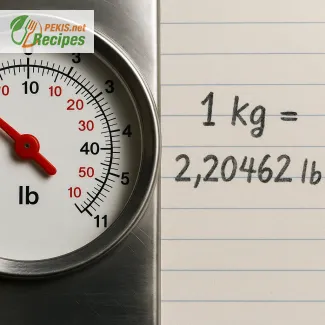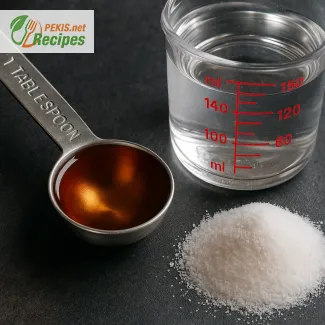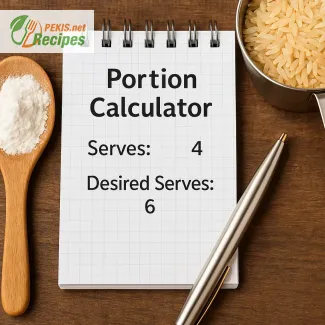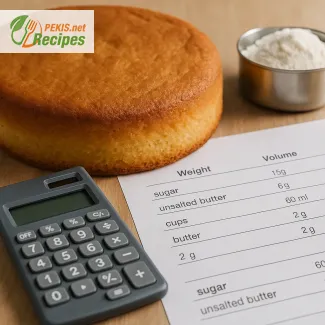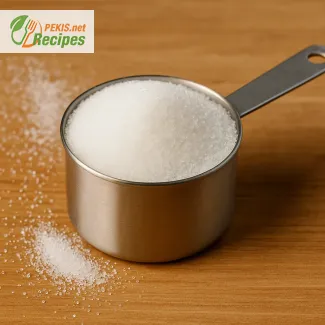
Convert grams to cups with ease: Kitchen conversions made simple
A practical guide for home cooks who need accurate measurements
Understanding how many grams are in a cup is one of the most frequent challenges faced by home bakers, amateur chefs, and anyone trying to follow a recipe from a different part of the world. Whether you're trying to convert an American recipe that uses cups, or a European one that relies on grams, knowing the right equivalents is essential for achieving accurate and delicious results.
This guide is designed for home cooks, recipe developers, and culinary enthusiasts who regularly encounter both metric and imperial systems in their kitchen. We'll cover the differences in ingredient density, show why cups are not all equal, and give you accurate reference points to simplify your next recipe.
Why grams and cups aren’t always interchangeable
When asking “how many grams in a cup?”, many assume there's a universal answer. But the truth is, the conversion depends entirely on the ingredient. That’s because a cup measures volume, while grams measure weight. So, one cup of flour won’t weigh the same as one cup of sugar or one cup of butter.
This distinction is critical when baking. Too much flour makes cookies dry. Too little butter makes cakes crumble. That’s why knowing how many grams each ingredient weighs per cup is essential for consistency.
Understanding volume vs. weight in baking
The difference between volume (cups) and weight (grams) causes many baking errors. If you scoop a cup of flour, you might compress it slightly—resulting in more flour than intended. In contrast, when you weigh 120 grams of flour, you know exactly what you’re getting.
A typical error is measuring one cup of shredded cheese and assuming it's the same as one cup of flour, but the difference can be over 100 grams! This is why weighing ingredients using grams is considered more reliable.
How many grams in a cup? Common ingredient examples
Below are some of the most commonly converted ingredients with their approximate gram values per cup:
- All-purpose flour: 120 g
- Granulated sugar: 200 g
- Butter: 227 g
- Brown sugar (packed): 220 g
- Honey: 340 g
- Milk: 240 g
- Rice (uncooked): 195 g
- Rolled oats: 90 g
- Almond flour: 96 g
Each of these can vary slightly depending on brand, humidity, and how it’s measured (scooped vs. spooned). Still, these numbers are widely accepted as reliable averages.
Why one cup of flour ≠ one cup of sugar
A cup is not a universal weight unit. One cup of powdered sugar weighs about 120 g, while a cup of granulated sugar weighs 200 g. That’s a difference of over 65%, and if you’re baking something like a sponge cake, that variation can ruin the result.
The difference is due to density. Dense ingredients like sugar and honey weigh more per cup than airy ones like flour or cocoa powder. Always check specific conversion charts for each ingredient.
Liquid vs. dry ingredients: Does it affect the conversion?
Yes—very much so. One cup of water weighs exactly 240 grams. But when you measure one cup of chopped spinach, it’s only around 30 grams. That's because water is dense and fills the cup entirely, while leafy greens are airy and light.
So when measuring ingredients like oil, milk, or syrup, using cups can work if no scale is available. But with dry ingredients like flour, nuts, or chocolate chips, weight (in grams) is the more reliable metric.
Should you always use a scale in the kitchen?
If you want precise, repeatable results, the answer is yes. A digital kitchen scale is one of the most cost-effective investments you can make. It eliminates all ambiguity and ensures you use the exact amount every time.
Especially for baking, where precision is everything, using grams is more consistent than cups. Many professional chefs and recipe developers write exclusively in grams for this reason.
Example: Converting 1 cup of flour to grams in a recipe
Let’s say your American recipe calls for 2 ¼ cups of all-purpose flour. To convert this to grams:
- 1 cup of all-purpose flour = 120 grams
- So, 2 ¼ cups = 2.25 x 120 g = 270 grams
Now, instead of scooping flour and hoping for accuracy, you can place a bowl on your scale, zero it out, and add exactly 270 grams. No more guesswork.
Ingredient-specific notes: What affects gram conversion?
Several factors can influence how many grams are in your cup of a given ingredient:
- Humidity and moisture content – affects ingredients like flour, brown sugar, or coconut
- Compaction – packed brown sugar weighs more than loosely scooped
- Shape and size – chopped vs. sliced nuts, or grated vs. cubed cheese
- Brand differences – not all flours or butters are created equal
For best results, always refer to a reliable ingredient conversion chart or use a recipe that lists weights.
How to convert cups to grams manually
While it's easier to use an online tool or table, you can follow this simple formula:
Cups × grams per cup = Total grams
Let’s apply this to peanut butter:
- 1 cup peanut butter ≈ 250 grams
- You need ¾ cup → 0.75 × 250 = 187.5 grams
This type of math helps when scaling recipes up or down. No need to estimate—just multiply and weigh.
Why recipes from the US often use cups
The US measuring system is based on volume (cups, tablespoons, teaspoons), not weight. This tradition remains strong, even though most of the world uses metric units like grams and milliliters.
That’s why if you’re reading American food blogs or cookbooks, you’ll often find recipes that use cups. Converting them properly ensures your recipe works even if you're used to metric measurements.
Tips for switching between cups and grams
- Use a trusted conversion chart: Every ingredient differs
- Invest in a scale: Especially if you bake often
- Be consistent: Don’t mix grams and cups in the same recipe
- Double-check: Especially with recipes from different countries
Switching systems can seem confusing at first, but after a few conversions, you’ll wonder how you ever cooked without measuring by weight.
Measure smart, cook better
Knowing how many grams are in a cup is more than just trivia—it’s a skill that can significantly improve your cooking and baking. It empowers you to adapt any recipe, follow international instructions, and eliminate the frustration of failed dishes.
By using this guide and a kitchen scale, you’ll not only increase accuracy but also boost confidence in your cooking. And once you start weighing ingredients, you may never go back to cups again.
